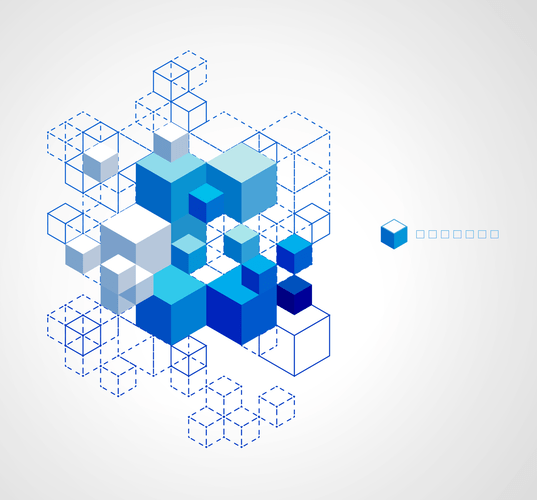The manager nodes are answerable for managing the cluster, while the employee nodes are answerable for working the containers. A swarm consists of a quantity of Docker hosts which run in Swarm mode and act as managers, to manage membership and delegation, and employees, which run swarm companies. A given Docker host can be a supervisor, a employee, or carry out each roles.
A Dockerfile is a name given to the kind of file that defines the contents of a conveyable image. Imagine you were going to write down a program in the Java programming language. Your computer does not understand Java by itself, so you will need a method to convert your code into machine code. An Image is a bundle of executable files that incorporates all the code, libraries, runtime, binaries and configuration information necessary to run an software. It creates a cooperative group of methods that present redundancy, enabling Docker Swarm failover if one or more nodes experience an outage.
Extra From Cloud
Each task is a slot that the scheduler fills by spawning a container. If an HTTP listener task subsequently fails its well being verify or crashes, the orchestrator creates a new reproduction task that spawns a new container.
deployment to totally different sets of nodes. If anything goes incorrect, you’ll find a way to roll back to a earlier model of the service. The diagram below shows how Swarm mode accepts service create requests and schedules tasks to worker nodes. When you declare a
Docker Swarm makes use of the standard Docker API to interface with different Docker tools, such as Docker Machine. For a replicated service, you specify the number of identical duties you want to run. For instance, you resolve to deploy an HTTP service with three replicas, each serving the same content.
Docker Swarm can be suitable if you have to prioritize excessive service availability and computerized load balancing over automation and fault tolerance. The cluster administration and orchestration features embedded in Docker Engine are built using swarmkit. Swarmkit is a
Both types of nodes are required in enough portions to make sure high availability and reliability of working companies. One of the principle advantages of Docker Swarms is rising software availability through redundancy. In order to perform, a docker swarm must have a swarm manager that may assign tasks to employee nodes. By implementing a number of managers, developers make positive that the system can proceed to perform even if one of the supervisor nodes fails.
What’s Docker Swarm Used For?
Plus, it actually works seamlessly with current Docker tools similar to Docker Compose. Prove your information is safe and compliant across all cloud and on-site setups. If you are not planning on deploying with Swarm, use

Please be at liberty to put it in the feedback part of this text “what is Docker swarm”, our specialists will get again to you at the earliest. The above image reveals you could have created the Swarm Cluster successfully. To strengthen our understanding of what Docker swarm is, allow us to look into the demo on the docker swarm. First, let’s dive into what Docker is before transferring as much as what docker swarm is. Compared to working Docker without Swarm mode, Docker Swarm provides several benefits for operating manufacturing workloads. If you need all the capabilities of Kubernetes however are delay by its studying curve, then K3s is a good different.
Kubernetes: The Reigning Champion
scheduler and orchestrator are agnostic about the sort of the task. However, the present model of Docker only supports container duties. Kubernetes has widespread adoption and a large community on its side. It is supported by each main cloud supplier and do-it-yourself choices like Docker Enterprise Edition. It is more highly effective, customizable and flexible, which comes at the price of a steeper initial learning curve.

orchestrator. The service and task abstractions themselves are unaware of the containers they implement. Hypothetically, you would implement other types of duties such as digital machine tasks or non-containerized process duties. The
Both use containers as the units of labor, although Kubernetes has an idea of “pods” which would possibly be composed of one or more containers as a basic, atomic unit. Docker, Docker Swarm, and Kubernetes are tools that make life easier for expertise professionals. To make use of these wonderful assets, you should perceive their relative strengths and capabilities. Read further to find out variations and similarities between Docker Swarm and Kubernetes, in addition to conditions where you’d select one over the opposite. One of some nice advantages of working with Docker Swarm is that developers can use the precise same artifacts — including the stack definition — in each their improvement and manufacturing environments. Swarm providers are software components that work together to create a full application.
Orchestrators like Docker Swarm and Kubernetes remedy the actual needs of actual teams for turning their desired state into actuality. After reaching the specified state, they monitor for disruption to that state and restore it when there’s a deviation. Replicated companies are instantiated as many occasions as you’ve requested.
A task is a operating container which is part of a swarm service and is managed by a swarm supervisor what is docker swarm, versus a standalone container.
- the nodes in the swarm to create that state.
- Docker Swarm and Apache Mesos are highly effective instruments for effectively managing containerized purposes.
- By implementing a quantity of managers, developers ensure that the system can continue to operate even if one of many supervisor nodes fails.
- The worker nodes obtain and execute the tasks assigned by the swarm supervisor once they have the resources to take action.
- Likewise, Docker Swarm’s automation capabilities are not as sturdy as those supplied by Kubernetes.
Docker Swarm is a light-weight, easy-to-use orchestration tool with limited choices in comparability with Kubernetes. In contrast, Kubernetes is complex however powerful and supplies self-healing, auto-scaling capabilities out of the field. K3s, a light-weight form of Kubernetes certified by CNCF, can be the best alternative if you would like the advantages of Kubernetes without all the learning overhead. So far, we’ve mentioned the pros and cons of each platform in general. We will examine the two platforms by way of their setup necessities, app deployment capabilities, availability and scaling, monitoring features, security, and cargo balancing.
In Kubernetes, we’d consider a “service” to be a community entity that makes it possible to achieve individual containers. In Swarm, nevertheless, a “service” means one thing completely different. That doesn’t however, mean there’s a clear reply as to which is “better”. There are many elements that determine https://www.globalcloudteam.com/ which is best for you, corresponding to existing surroundings, target setting, application complexity, and so on. Docker will shortly support Kubernetes Guide in addition to Docker Swarm, and Docker users will be ready to use either Kubernetes or Swarm to orchestrate their container workloads.

Leave a Reply